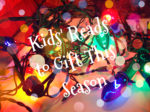Busy Teens, Pattern Play, and Lyric Moments 3
Piano For Busy Teens, Melody Bober, Gayle Kowalchyk, E.L. Lancaster (2009 Alfred)
The busy teenager presents a great challenge to all teachers. The busy teenager who started lessons in middle school or later presents an even greater one. The cover on these 3 volumes says it all: car keys, a concert ticket, earbuds, and money are scattered over the likeness of a school notebook.
In the introduction the teen is told- Remember not to judge your success in piano study by comparing yourself to others. You are successful if you love music and enjoy playing the piano regardless of how difficult your pieces are or how many pieces you learn each year.
Piano for Busy Teens is an intermediate method. The volumes provide original classical repertoire, jazz blues, ballads, pieces, classical arrangements, exercises, and duets, plus 1 Minute FYIs, 4 week 15 Minute Practice Plans, and 5 Minute Finishing Touches. The pieces are divided into logical and accessible sections for learning.
The original pieces and arrangements of favorites such as Rage over the Lost Penny, In the Hall of the Mountain King, Canon in D, and Maple Leaf Rag are all by Melody Bober. I presume that Gayle Kowalchyk and E.L. Lancaster were responsible for the excellent collection of warm up and Hanon exercises and the learning frameworks.
Not every student desires to compete in classical contests and auditions. I just had a teenager graduate who had started lessons when he was 14, and, who held down two jobs while excelling in a demanding high school curriculum. Oh how I wish we’d had these books to use together over the last four years. But there are other busy teens in my studio who love music and want to include it in their lives forever (and who are about to get their drivers licenses) so, these volumes are hired!
Pattern Play: Inspiring Creativity at the Piano, Akiko & Forest Kinney (2010 Frederick Harris)
I have always wanted some improvisational activities along the same lines as Nancy & Randall Faber’s Discovering Improvisations but aimed at a more mature audience. Well, I finally have more than I ever wished for!
Akiko and Forest Kinney have added Pattern Play Volumes 1-4 to their impressive creative piano library. AND, the best part is, these improvisation frameworks are not uni-taskers!!! They are totally accessible by pianists of any level and experience and totally flexible in regard to the learning situation, be it private, small group, class or even on your own.
The pieces are organized into patterns (main accompaniments) and vacations (what you play when you want a break). Each piece can be played as a duet with a teacher or fellow student or as a solo. A good number of the pieces are playable as trios or quartets.
The title of the first piece is World Piece, forecasting the experiences in world music idioms which are found throughout the series. Persia, Africa, The USA, Ireland, Japan, The Caribbean, Spain, Paris, and Brazil are all represented. Carefully crafted pieces allow exploration in jazz, blues, pop, medieval, classical, boogie, and blues through, scales, modes, intervals, chords, melodies and bass patterns.
Suggestions, musical notation, theory explanations and creative ideas are given for each piece. These are straight and to the point and never distracting. There is just enough teaching to allow the student to experiment but never so much as to overwhelm. Additional ideas and versions of the pieces can be found on the Frederick Harris Website.
I will definitely use these books in the fall in my college piano class for the general and community student and in my smaller group classes for teenagers. Yippee! I can’t wait to get started!
Lyric Moments: 6 Expressive Solos for Late Intermediate Pianists, Catherine Rollin (2010 Alfred)
Catherine Rollin’s new addition to the Lyric Moments series is all we have come to expect from her. Ms. Rollin composes pieces with which pianists of all backgrounds can connect. In this volume pianists explore and express sadness and loss, thoughts revealed in the middle of the night, tenderness, purity and goodness, the unique splendor of summer, and remembrance.
It is interesting how the book begins with Sweet Elegy and ends with Remembrance. Anyone who has experienced a loss could certainly connect to and express the feelings encountered during their personal grief process. For example, I can imagine these pieces being quite cathartic for a teenager who has recently lost a grandparent.
These are late intermediate level pieces. They range from 3 to 5 pages in length, and the longer ones are easily broken into sections to learn. Keys used include Ab, A Min., G, Db, A, and F. Basic bass accompaniment patterns are expanded and cover up to 2 octaves.
Phrasing and expression are paramount from the beginning. Fingering and pedaling suggestions are well thought out and attainable. Sixteenth notes are employed sparingly to create high points in the phrase structure allowing the pianist to easily weave them into the line. The melodies themselves are full of expressive leaps so that rubato occurs quite naturally.


